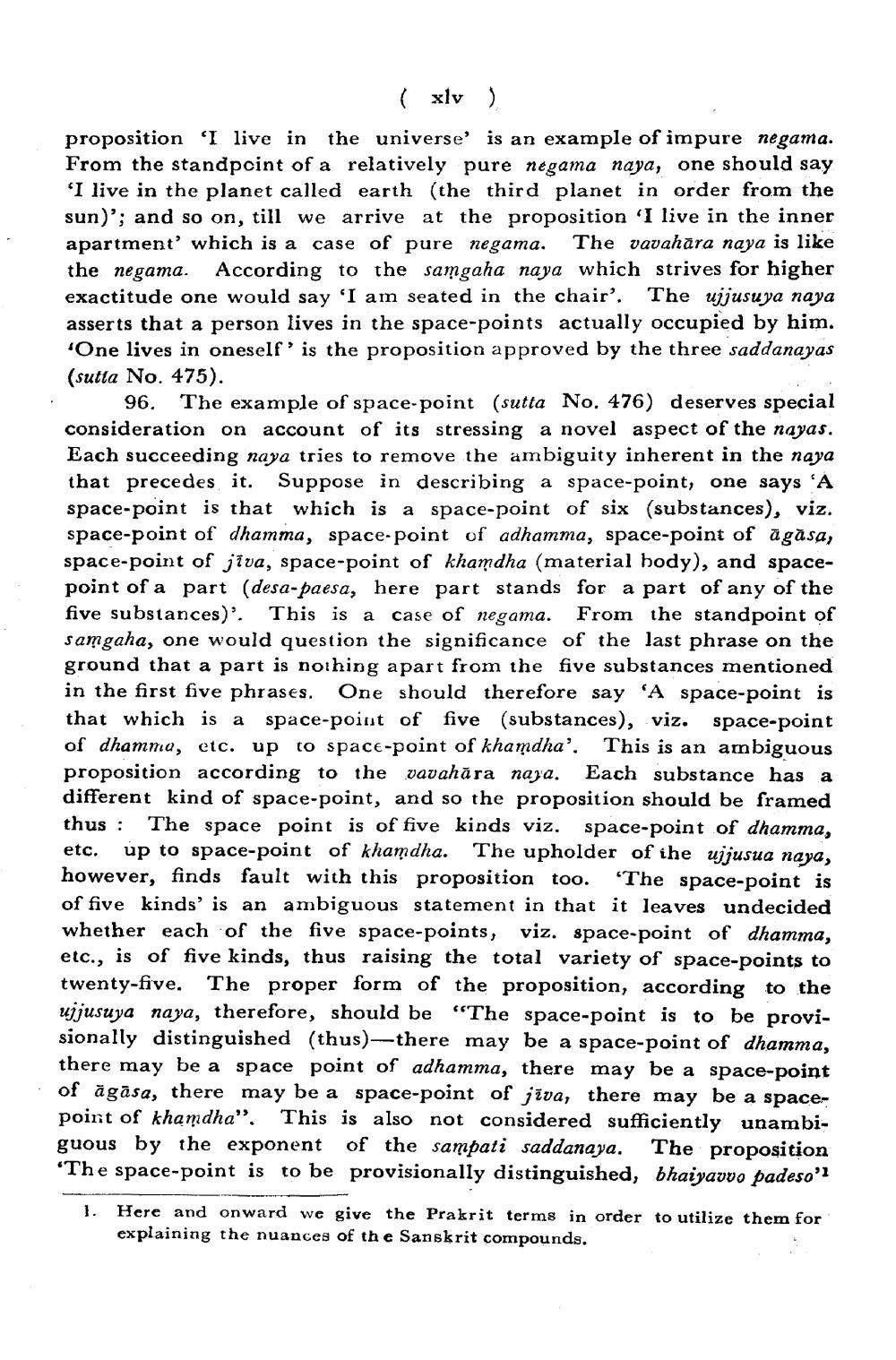________________
(xlv)
proposition 'I live in the universe' is an example of impure negama. From the standpoint of a relatively pure negama naya, one should say 'I live in the planet called earth (the third planet in order from the sun)'; and so on, till we arrive at the proposition 'I live in the inner apartment' which is a case of pure negama. The vavahara naya is like the negama. According to the samgaha naya which strives for higher exactitude one would say 'I am seated in the chair'. The ujjusuya naya asserts that a person lives in the space-points actually occupied by him. 'One lives in oneself' is the proposition approved by the three saddanayas (sutta No. 475).
96. The example of space-point (sutta No. 476) deserves special consideration on account of its stressing a novel aspect of the nayas. Each succeeding naya tries to remove the ambiguity inherent in the naya that precedes it. Suppose in describing a space-point, one says 'A space-point is that which is a space-point of six (substances), viz. space-point of dhamma, space-point of adhamma, space-point of agāsa, space-point of jiva, space-point of khamdha (material body), and spacepoint of a part (desa-paesa, here part stands for a part of any of the five substances)'. This is a case of negama. From the standpoint of samgaha, one would question the significance of the last phrase on the ground that a part is nothing apart from the five substances mentioned in the first five phrases. One should therefore say 'A space-point is that which is a space-point of five (substances), viz. space-point of dhamma, etc. up to space-point of khamdha'. This is an ambiguous proposition according to the vavahara naja. Each substance has a different kind of space-point, and so the proposition should be framed thus: The space point is of five kinds viz. space-point of dhamma, etc. up to space-point of khamdha. The upholder of the ujjusua naya, however, finds fault with this proposition too. "The space-point is of five kinds' is an ambiguous statement in that it leaves undecided whether each of the five space-points, viz. space-point of dhamma, etc., is of five kinds, thus raising the total variety of space-points to twenty-five. The proper form of the proposition, according to the ujjusuya naya, therefore, should be "The space-point is to be provisionally distinguished (thus)-there may be a space-point of dhamma, there may be a space point of adhamma, there may be a space-point of agasa, there may be a space-point of jiva, there may be a spacepoint of khamdha". This is also not considered sufficiently unambiguous by the exponent of the sampati saddanaya. The proposition 'The space-point is to be provisionally distinguished, bhaiyavvo padeso"
1.
Here and onward we give the Prakrit terms in order to utilize them for explaining the nuances of the Sanskrit compounds.




